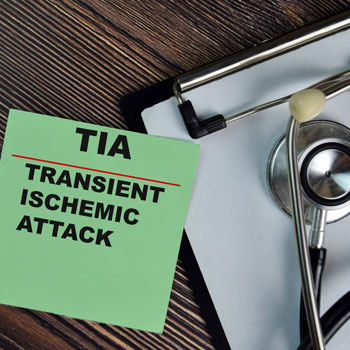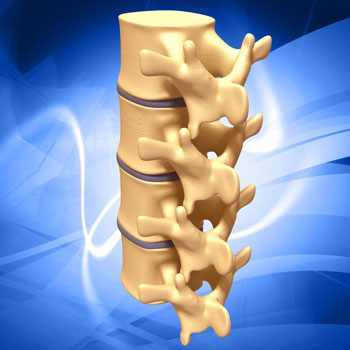Take TIAs as seriously as a stroke
Internal medicine physicians play a critical role in educating patients about the seriousness of transient ischemic attacks and preventing their recurrence.
Stroke neurologists say transient ischemic attacks (TIAs) should be treated with the same urgency as stroke both by doctors and their patients, as they offer an opportunity to intervene and potentially prevent a more serious, debilitating event.
“TIAs were once thought of as minor events that were troublesome but not necessarily serious on their own,” said Walter Kernan, MD, FACP, senior research scientist at Yale University of Medicine in New Haven, Conn., and coauthor of the latest guidance on secondary stroke prevention from the American Heart Association/American Stroke Association (AHA/ASA). “We now know that they identify people at very high risk for stroke in the near future and that they should be treated as emergencies warranting immediate medical attention.”

TIAs are often called “mini-strokes” because their symptoms are identical to stroke but resolve relatively quickly without causing permanent brain damage. However, patients have a 10% to 18% risk of stroke for 90 days following a TIA, according to the AHA/ASA, underscoring the importance of rapid evaluation and initiation of secondary prevention strategies.
“Because TIA symptoms can last as little as five to 15 minutes, it's possible that a patient or provider may brush off an episode and delay following up,” said Shreyansh Shah, MD, a vascular neurologist at Duke University Health System in Durham, N.C. “That would be a huge mistake because that patient has as great a chance of recurrence as someone who experiences an actual stroke.”
Internal medicine physicians play a critical role in educating patients about the seriousness of TIA and preventing recurrence, experts said. Following evaluation by a stroke neurologist, primary care physicians are ideally positioned to manage common vascular risk factors for stroke, including diabetes, hypertension, smoking cessation, and lipids.
“A TIA gives us an opportunity to warn patients that they're at risk for stroke before they've had a major event,” said Swaroop Pawar, MD, director of the Comprehensive Stroke Center at Duke. “These are patients who have had symptoms and are now back to their baseline without deficits, giving us a chance to talk with them about their risk and figure out the best measures to mitigate it.”
Diagnosing TIA
Almost 800,000 people annually experience a stroke in the United States. According to the AHA/ASA, 87% of those are ischemic as opposed to hemorrhagic. TIAs occur in an estimated additional 240,000 individuals each year.
TIAs last no more than 24 hours. Most patients report symptoms—such as numbness on one side of the body, impaired balance, slurred speech, or blurred vision—that disappear within five to 30 minutes, experts said.
Regardless of duration of symptoms, an MRI of the head is needed to make a definitive diagnosis of TIA or stroke, said Cheryl Bushnell, MD, MHS, professor of neurology and chief of the stroke division at Wake Forest University School of Medicine in Winston Salem, N.C. MRI findings sometimes reveal signs of ischemia that are not apparent based on a patient's duration of symptoms and clinical presentation.
“If we see evidence of multiple small strokes on MRI, especially if they're in different areas of the brain with different blood vessel distribution, it might mean the patient has a central source of clot, such as the heart,” she said.
An MRI should be a first step whether a patient presents soon after symptom onset or within the following couple of weeks, said Carter Denny, MD, MPH, assistant professor of neurology and attending physician at Georgetown University Medical Center in Washington, D.C. Patients should also undergo additional lab and imaging tests to determine the source or underlying cause of the TIA or stroke.
For example, an echocardiogram determines whether the TIA or stroke has a cardioembolic source, such as cardiomyopathy or an enlarged left atrium putting patients at risk for atrial fibrillation, she said. Blood vessel imaging of the head and neck, such as CT angiography or magnetic resonance angiography, identifies large-artery causes, such as carotid stenosis or intracranial atherosclerosis.
Results from the workup allow specialists to implement targeted interventions early enough to potentially prevent a major stroke, said Dr. Pawar. For example, a stent is typically inserted if vascular imaging reveals a narrowing of the carotid artery, while intracranial stenosis calls for aggressive medical management, such as dual antiplatelet therapy.
Patients diagnosed with atrial fibrillation should be put on anticoagulant therapy, he added. If the source is lacunar, treatment focuses on strategies to manage hypertension, hyperlipidemia, and diabetes.
Stroke neurologists also commonly use the seven-point ABCD2 scoring system to stratify patients' risk for stroke following a TIA, said Michelle Lin, MD, MPH, a neurologist at Mayo Clinic Hospital in Jacksonville, Fla. The score considers a patient's age, blood pressure, clinical features, TIA duration, and presence of diabetes.
The ABCD2 scoring system can also be used by primary care physicians to quickly assess whether a patient requires immediate hospitalization, said Dr. Lin. A score of 4 or above typically calls for hospital admission and an expedited stroke workup.
At Georgetown, for example, patients with a score of 3 or higher are considered at high two-day risk of stroke and admitted under observation to expedite full stroke evaluation, said Dr. Denny. Patients with scores between 0 and 2 are monitored closely in the outpatient setting.
A TIA patient's ABCD2 score, combined with MRI imaging results of the brain to identify multiple embolic versus single strokes and their location, also guides medication strategies for the first 30 days, said Dr. Bushnell. Patients at high risk of recurrence may be prescribed dual antiplatelet therapy—typically aspirin plus clopidogrel—for 21 days followed by aspirin alone, while lower-risk patients may stay on one antiplatelet agent for the entire period. The current recommendation is dual antiplatelet therapy for all patients with a recent minor ischemic noncardioembolic stroke or high-risk TIA.
Physicians should adhere to a risk-based medication strategy because dual antiplatelet therapy is not appropriate for all patients and should not be continued long-term, according to the AHA/ASA guideline. It is recommended only in specific cases, such as patients with early-arriving minor stroke and high-risk TIA or severe symptomatic intracranial stenosis.
In addition, all patients should either start or continue statin therapy, with a goal of lowering LDL cholesterol levels below 70 mg/dL, as recommended in the AHA/ASA guideline, said Dr. Lin. Neurologists will also adjust patients' hypertension medications as needed during the first 30 days.
Ongoing secondary prevention
Within about 30 days, primary responsibility for management typically shifts from a neurologist to the primary care physician, who should see patients regularly to monitor achievement of secondary prevention goals, assist in recovery, and continue health education, said Dr. Kernan. Internal medicine physicians typically receive a discharge summary from the patient's treating neurologist with tailored treatment recommendations and medication targets aimed at lowering their risk for major stroke.
Communication and patient engagement are critical in the early days, experts said. Patients often leave the hospital feeling overwhelmed about what has occurred and fearful of their risk for another event.
“Primary care physicians can really improve patient experience by starting right after hospitalization to help patients understand what happened, identify their needs and show them and how their condition can to be managed,” said Dr. Kernan. “There's a lot to do for these patients—including addressing blood pressure, smoking, dyslipidemia, diet, and exercise. Not every patient will elect to change behaviors immediately in a way that can reduce their risk, but their motivation and thinking often evolves if opportunities are provided.”
Primary care physicians should clearly translate the information in the discharge summary from the stroke admission into the desired goals of any ongoing medication and lifestyle interventions, said Lee Schwamm, MD, a vascular neurologist at Massachusetts General Hospital in Boston. They should also attempt to identify and address any social drivers of health that may impact a patient's ability to access care, afford medications, and comply with suggested treatments.
“The primary care physician is more likely than the neurologist to be familiar with a patient's socioeconomic circumstances,” he said. “And patients often feel more comfortable discussing such issues with their primary provider versus a specialist who they saw once or twice in the hospital.”
Secondary prevention of stroke hinges on controlling three conditions that internal medicine physicians are used to managing: hypertension, hyperlipidemia, and diabetes, said Dr. Lin.
“Studies have shown that if we can get vascular risk factors optimized, we can prevent or lower the risk of another stroke by 70% to 80%,” she said. “That means getting blood pressure to less than 130 [mm Hg] systolic, LDL cholesterol to less than 70 mg/dL, and HbA1c to less than 7%.”
Internal medicine physicians also oversee long-term cardiac monitoring of patients deemed to be at risk for atrial fibrillation, said Dr. Bushnell. Evidence of atrial fibrillation may not be apparent on EKG results immediately following the event but can show up later, alerting primary care physicians to switch a patient from aspirin to anticoagulation.
The AHA/ASA guideline stresses the importance of lifestyle factors in stroke prevention, including following a healthy low-salt or Mediterranean diet and staying physically active.
“Importantly, the guideline emphasizes physical activity and specifically recommends that patients get at least four 10-minute or two 20-minute periods of moderately intense exercise per week,” said Dr. Shah. “Physicians should also counsel patients about smoking cessation and alcohol use.”
Changing behaviors around diet and exercise requires more than just passing along information, the guideline authors concede. Obesity, for example, potentially can be treated with intensive behavioral counseling, appetite-reducing medications, and metabolic surgery. The authors note that even modest weight loss of 5% to 10% is associated with measurable improvements in vascular risk factors.
However, providing appropriate counseling and medication monitoring is challenging in a busy primary care setting.
“It's really difficult to cover all of these things in a 15-minute primary care appointment,” said Dr. Bushnell. “A lot of our stroke patients are challenged by age and other factors that limit their ability to be physically active, while changing smoking and eating habits often requires intensive behavioral interventions.”
Despite such challenges, internal medicine physicians can have a major impact on preventing stroke by recognizing the seriousness of TIA and partnering with neurologists to manage the most common triggers.
“Controlling vascular risk factors, such as blood pressure, is one of the most significant ways internists can work with our patients after a TIA,” said Dr. Denny. “There's a really important partnership that happens between neurologists and internists to ensure that these patients get the appropriate evaluation for their TIAs and the appropriate follow-up.”



